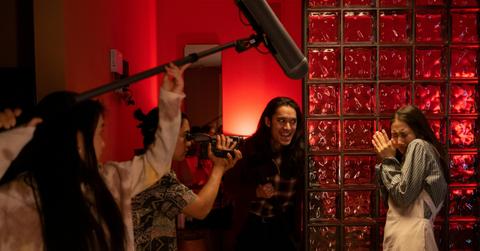Must-Watch Horror Movies Directed By Women

Women have profoundly shaped the horror genre with their visionary works, crafting films that rank among the most iconic and influential in cinema history.
In the past decade, indie filmmakers like Julia Ducournau and Ana Lily Amirpour have opened doors to make it more common to see women as horror directors, but it’s still statistically a fact that women only make up 5% of the directors in horror.
Despite traditionally facing gender-based challenges, these directors have left an indelible mark on the industry by contributing to the genre’s success with some of the most famous and critically acclaimed horror films, paving the way for future filmmakers, and continuously expanding the boundaries of horror cinema. Many viewers might not even realize that some iconic horror movies are by women or that they may have feminist themes hidden in them.
Here are the most iconic films by women directors who frightened audiences worldwide and inspired contemporaries.
“The Babadook” is a psychological horror film that follows the story of a widow and her son as they are haunted by a terrifying humanoid monster in their home.
Critics have acclaimed the film as one of the scariest modern horror movies, praising it for its chilling atmosphere and deep psychological themes while it relies more on building tension than on traditional jump scares.
Over time, “The Babadook” has achieved cult classic status, with both audiences and critics praising its unique approach to horror. Interestingly, the monster itself has inadvertently become a queer icon, stemming from a viral incident where Netflix mislabeled the movie as “LGBT” rather than “Horror” when it was first streamed, further growing as people connected “a monster in a closet” as a queer metaphor.
Jennifer Kent’s original interpretation of the monster was of mental illness, how depression and anxiety can cripple anything, even motherhood, and how you can only subdue that inner monster, not destroy it forever.
“American Psycho,” released in 2000, is a gripping horror film that delves into the life of Patrick Bateman, a character who navigates the contrasting worlds of being an investment banker by day and a serial killer by night.
Bret Easton Ellis deemed his original book unfilmable, but Mary Harron’s vision and talent transformed it into a cinematic reality. Mary not only wrote the screenplay but also directed the film, showcasing her ability to translate the novel’s complex themes to the screen.
Since its release, audiences have elevated “American Psycho” to major cult-classic status, largely because Christian Bale delivers a performance often considered a defining moment in his career. The film’s portrayal of the conflicted and chillingly charismatic Bateman has also made it a popular subject for modern memes. Surprisingly, the best time to watch this movie is now.
Mary Harron’s female view on toxic masculinity has only held up better and better in the twenty-five years since the movie came out. Serial killer Patrick Bateman obsessively focuses on wealth and idolizes billionaires like Donald Trump. Mary Harron’s screenplay shines of satire, while Bret Easton Ellis’ original script may have kept his internalized misogyny.
Nia DaCosta’s “Candyman” serves as a direct sequel to the original 1992 film. The Candyman, a hook-handed African American figure with a haunting backstory, fell victim to a brutal murder after engaging in an interracial affair.
Intriguingly, the Candyman’s lore intersects with other infamous legends such as Bloody Mary. The eerie ritual of summoning both entities by repeating their names multiple times creates a chilling connection between folklore and cinematic horror. Nia DaCosta’s version takes the initial theme and updates it so more modern Black victims of senseless violence and murder join the Candyman’s “hive,” morphing into the societal monster they are wrongly perceived to be.
“Pet Sematary” is one of the first Stephen King novels adapted into a movie. It tells the story of a Maine family who moves next door to an ancient burial ground that can reanimate the dead. One thing Mary did not compromise on was casting. She insisted on her choices for main characters Gage and Jud. Stephen King wrote the screenplay to this movie himself, and Mary Lambert was very faithful to his vision.
The First Omen is part of the Omen franchise, focusing on an American nun working at an Italian orphanage who uncovers a conspiracy to birth the Antichrist. Arkasha Stevenson avoids traditional jump scares, opting instead for disturbing visuals that evoke deep terror. Notably, the film is famous for its harrowing childbirth scene, subverting romanticized views of motherhood by portraying it as horrifying. Arkasha highlights the commodification of women, presenting them as vessels and exploring themes of forced reproduction. Additionally, the film critiques the hypocrisy of the church, with all “villains” being church members, deepening its narrative impact.






